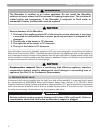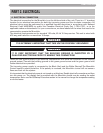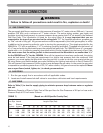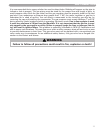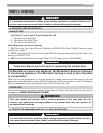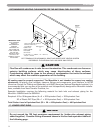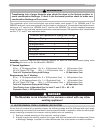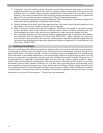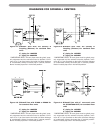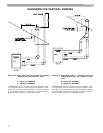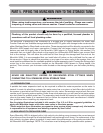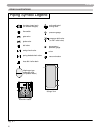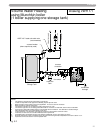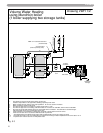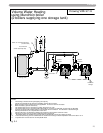
16
VENTING
3. If practical, close all building doors, windows and all doors between the space in which the
appliance remains connected to the common venting system located and other spaces in the
building. Turn on clothes dryers and any appliances not connected to the common venting
system. Turn on any exhaust fans, such as range hoods and bathroom exhausts, at maximum
speed. Do not operate a summer exhaust fan. Close all fireplace dampers.
4. Place in operation the appliance being inspected. Follow the lighting instructions. Adjust the
thermostat so the appliance will operate continuously.
5. Test for spillage at the draft hood relief opening after 5 minutes of main burner operation. Use
the flame of a match or candle or smoke from a cigarette.
6. After it has been determined that each appliance remaining connected to common venting
system properly vents when tested as outlined, return doors, windows, exhaust fans, fire-
place dampers and any other gas burning appliance to their previous condition of use.
7. Any improper operation of the common venting system should be corrected so the installa-
tion conforms with the National Fuel Gas Code, ANSI Z223.1. When resizing any portion of
the common venting system, the common venting system should be resized to approach the
minimum size as determined using the appropriate tables in Appendix G in the National Fuel
Gas Code , ANSI Z 223.1
E. CONDENSATE REMOVAL
This is a condensing high efficiency appliance, therefore this unit has a condensate removal system.
Condensate is nothing more than water vapor, derived from the combustion products, similar to an
automobile when it is initially started. It is very important that the condensate line is sloped away
from and down to a suitable inside drain, if the condensate outlet on the Munchkin is lower than the
drain, you must use a condensate removal pump (kit available from Heat Transfer Products, Inc.) A
condensate filter, if required by local authorities, can be made up of lime crystals, marble or phos-
phate chips will neutralize the condensate. This can be done in the field by the installer or you may
purchase one from Heat Transfer Products, Inc. It is also very important that the condensate line is
not exposed to freezing temperatures, or any other type of blockage. Plastic tubing should be the
only material used for the condensate line. Steel, brass, copper or others will be subject to corrosion
or deterioration. A second vent may be necessary to prevent condensate line vacuum lock if a long
horizontal run is used. An increase to 1” tubing may be necessary.



